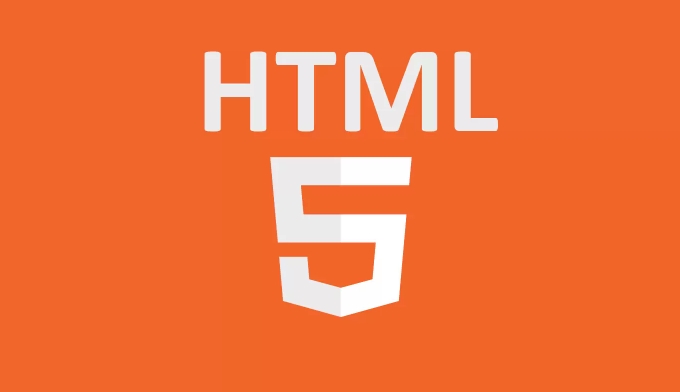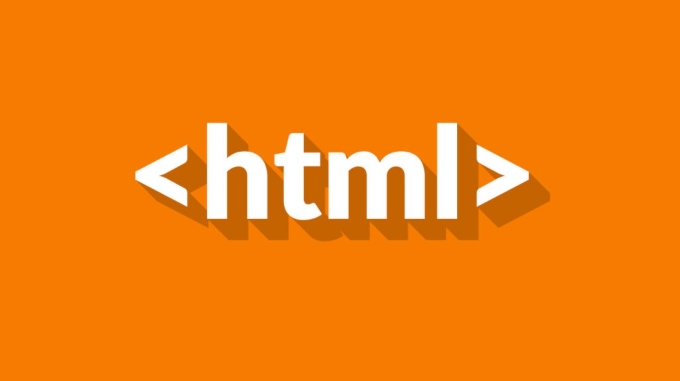The HTML
tag preserves whitespace and line breaks exactly as written in the source code, making it ideal for formatted text; 1. It prevents browsers from collapsing spaces and ignoring line breaks, unlike standard <p> tags; 2. Common uses include code blocks (often paired with <code>), terminal output, and poetry; 3. It renders in monospace font by default, is block-level, and can be styled with CSS for backgrounds, padding, and scrolling; 4. For accessibility, use <code> within <pre class="brush:php;toolbar:false"> and add aria-label or captions for screen readers; 5. Use <pre class="brush:php;toolbar:false"> whenever exact text formatting must be maintained.

The HTML <code><pre class="brush:php;toolbar:false"></pre> tag is used to define preformatted text. It preserves both whitespace and line breaks, exactly as they appear in the HTML source code. This makes it ideal for displaying text that relies on specific formatting, such as code snippets, ASCII art, or poetry.

Why use the <code><pre class="brush:php;toolbar:false"></pre> tag?
By default, web browsers collapse multiple spaces and ignore line breaks in HTML. For example:
<p>
This has irregular spacing.
And this is on a new line.
</p>Will render as a single line with only one space between words.

But with <code><pre class="brush:php;toolbar:false"></code>:</p><pre class='brush:php;toolbar:false;'><pre class="brush:php;toolbar:false"> This has irregular spacing. And this is on a new line. </pre></pre><p>This will display <strong>exactly</strong> as written — spaces and line breaks preserved.</p><img src="/static/imghw/default1.png" data-src="https://img.php.cn/upload/article/000/000/000/175393198187268.jpeg" class="lazy" alt="What is the HTML pre tag for preformatted text" /><h3 id="Common-use-cases">Common use cases</h3><ul><li><p><strong>Code blocks</strong><br /> Often used with <code><code> inside for styling:
<pre class="brush:php;toolbar:false"><code>function hello() {
console.log("Hello, world!");
}</code>Terminal output
<pre class="brush:php;toolbar:false"> $ npm install added 56 packages in 3.2s
Poetry or text art
<pre class="brush:php;toolbar:false"> Roses are red, Violets are blue. Sugar is sweet, And so are you.
Styling and notes
- The <code>
</code> tag typically renders in a <strong>monospace font</strong> by default.</li><li>It’s a <strong>block-level</strong> element.</li><li>You can style it with CSS (e.g., <code>background-color</code>, <code>padding</code>, <code>overflow</code> for scrolling long lines).</li></ul><p>Example with basic styling:</p><pre class='brush:php;toolbar:false;'><pre style="background: #f4f4f4; padding: 10px; border: 1px solid #ddd; overflow: auto;"> // This is a long code line that will scroll horizontally if needed const reallyLongLine = "This will not wrap unexpectedly thanks to pre formatting";
Accessibility tip
When using <code><pre class="brush:php;toolbar:false"></pre> for code, always include <code><code> and consider adding <code>aria-label or a caption for screen readers.
Basically, if you need text to appear exactly as written — spaces, indents, and all — <code><pre class="brush:php;toolbar:false"></pre> is the right tag.
The above is the detailed content of What is the HTML pre tag for preformatted text. For more information, please follow other related articles on the PHP Chinese website!

Hot AI Tools

Undress AI Tool
Undress images for free

Undresser.AI Undress
AI-powered app for creating realistic nude photos

AI Clothes Remover
Online AI tool for removing clothes from photos.

Clothoff.io
AI clothes remover

Video Face Swap
Swap faces in any video effortlessly with our completely free AI face swap tool!

Hot Article

Hot Tools

Notepad++7.3.1
Easy-to-use and free code editor

SublimeText3 Chinese version
Chinese version, very easy to use

Zend Studio 13.0.1
Powerful PHP integrated development environment

Dreamweaver CS6
Visual web development tools

SublimeText3 Mac version
God-level code editing software (SublimeText3)

Hot Topics
 What is the loading='lazy' one of the html attributes and how does it improve page performance?
Jul 01, 2025 am 01:33 AM
What is the loading='lazy' one of the html attributes and how does it improve page performance?
Jul 01, 2025 am 01:33 AM
loading="lazy" is an HTML attribute for and which enables the browser's native lazy loading function to improve page performance. 1. It delays loading non-first-screen resources, reduces initial loading time, saves bandwidth and server requests; 2. It is suitable for large amounts of pictures or embedded content in long pages; 3. It is not suitable for first-screen images, small icons, or lazy loading using JavaScript; 4. It is necessary to cooperate with optimization measures such as setting sizes and compressing files to avoid layout offsets and ensure compatibility. When using it, you should test the scrolling experience and weigh the user experience.
 Applying Semantic Structure with article, section, and aside in HTML
Jul 05, 2025 am 02:03 AM
Applying Semantic Structure with article, section, and aside in HTML
Jul 05, 2025 am 02:03 AM
The rational use of semantic tags in HTML can improve page structure clarity, accessibility and SEO effects. 1. Used for independent content blocks, such as blog posts or comments, it must be self-contained; 2. Used for classification related content, usually including titles, and is suitable for different modules of the page; 3. Used for auxiliary information related to the main content but not core, such as sidebar recommendations or author profiles. In actual development, labels should be combined and other, avoid excessive nesting, keep the structure simple, and verify the rationality of the structure through developer tools.
 What are best practices for writing valid and well-formed HTML code?
Jul 01, 2025 am 01:32 AM
What are best practices for writing valid and well-formed HTML code?
Jul 01, 2025 am 01:32 AM
When writing legal and neat HTML, you need to pay attention to clear structure, correct semantics and standardized format. 1. Use the correct document type declaration to ensure that the browser parses according to the HTML5 standard; 2. Keep the tag closed and reasonably nested to avoid forgetting closed or wrong nesting elements; 3. Use semantic tags such as, etc. to improve accessibility and SEO; 4. The attribute value is always wrapped in quotes, and single or double quotes are used uniformly. Boolean attributes only need to exist, and the class name should be meaningful and avoid redundant attributes.
 What are the essential HTML elements for structuring a webpage?
Jul 03, 2025 am 02:34 AM
What are the essential HTML elements for structuring a webpage?
Jul 03, 2025 am 02:34 AM
The web page structure needs to be supported by core HTML elements. 1. The overall structure of the page is composed of , , which is the root element, which stores meta information and displays the content; 2. The content organization relies on title (-), paragraph () and block tags (such as ,) to improve organizational structure and SEO; 3. Navigation is implemented through and implemented, commonly used organizations are linked and supplemented with aria-current attribute to enhance accessibility; 4. Form interaction involves , , and , to ensure the complete user input and submission functions. Proper use of these elements can improve page clarity, maintenance and search engine optimization.
 How to use the style html attributes for inline CSS?
Jul 01, 2025 am 01:42 AM
How to use the style html attributes for inline CSS?
Jul 01, 2025 am 01:42 AM
It is actually very simple to write inline styles using HTML's style attribute. Just add style="..." to the tag and then write CSS rules in it. 1. The basic writing method is CSS style with the attribute value in the form of a string. Each style is separated by a semicolon. The format is the attribute name: attribute value. For example: this paragraph of text is red. Note that the entire style string should be wrapped in double quotes. Each CSS attribute should be added with a semicolon after it. The attribute name is standard writing method of CSS; 2. Applicable scenarios for inline styles include dynamic style control, email template development and rapid debugging, such as allowing the picture to be displayed in the center to be written; 3. Several pitfalls that need to be avoided include high priority but difficult to maintain, many code repetitions, and special characters.
 How can JavaScript be used to create and manipulate HTML tags?
Jul 01, 2025 am 01:42 AM
How can JavaScript be used to create and manipulate HTML tags?
Jul 01, 2025 am 01:42 AM
JavaScript dynamically creates, modifys, moves and deletes HTML elements through DOM operations. 1. Use document.createElement() to create a new element and add it to the page through appendChild() or insertBefore(); 2. Select existing elements through querySelector() or getElementById(), and modify them using textContent, innerHTML, setAttribute() and other methods; 3. When processing multiple elements through loops, you need to note that querySelectorAll() returns NodeList; 4. Move
 Which html attributes are most important for SEO?
Jul 01, 2025 am 01:44 AM
Which html attributes are most important for SEO?
Jul 01, 2025 am 01:44 AM
ThefourmostimpactfulHTMLattributesforSEOarethetitletag,altattribute,hrefattribute,andmetadescription.1.Thetitletaginthesectioniscrucialasitinformsusersandsearchenginesaboutthepage’scontent,mustbeconcise,keyword-relevant,under60characters,anduniqueper
 What are the integrity and crossorigin html attributes used for when loading scripts or styles from a CDN?
Jul 01, 2025 am 01:39 AM
What are the integrity and crossorigin html attributes used for when loading scripts or styles from a CDN?
Jul 01, 2025 am 01:39 AM
Theintegrityattributeensuresaresourcehasn’tbeenmodifiedbyusingacryptographichash,whilecrossoriginhandlescross-originrequeststoenablepropervalidation.1.Integritychecksthefile’sauthenticityviaSHA-256,SHA-384,orSHA-512hashes,blockingmaliciousorcorrupted






